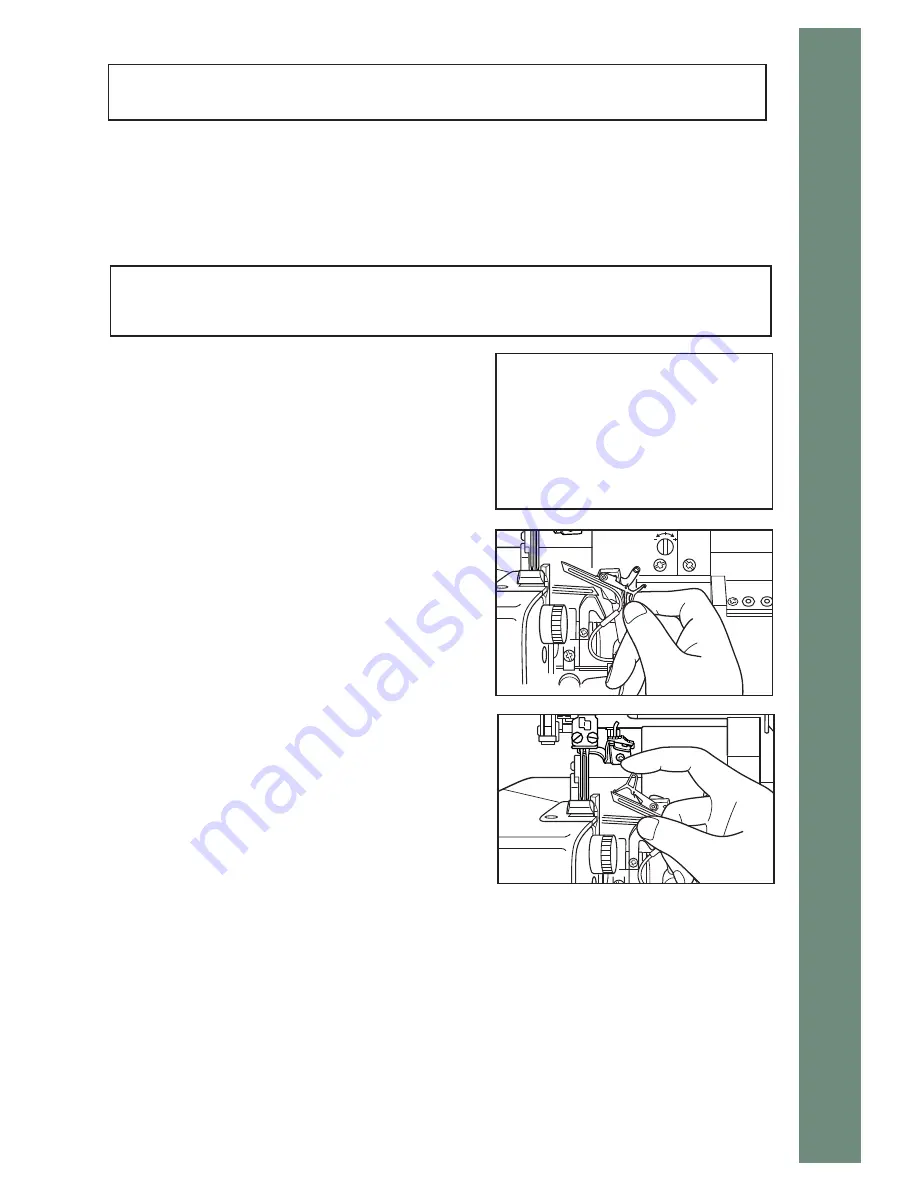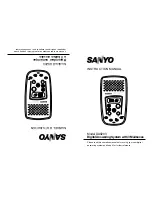
Left or right needle positions can be used for 2-thread
serging.
See machine threading illustrations on page 26.
1. Place the left needle thread on far left spool pin (or right
needle thread on second from left spool pin) and bring
the thread end through the telescopic thread guide
directly above the spool of thread. Bring the thread
through the top thread guide that is normally used for
the upper looper (3rd from left), and down the front.
Then take the thread to the left and thread the machine
as you would for the needles in their normal position.
(see illustration on page 26 for correct threading).
2. Using the needle threader, thread the eye of left or right
needle. (see page13 for threading of needles)
3. Rotate the handwheel to bring the upper looper into
position to attach the subsidiary looper. Rotate the
subsidiary looper up and to the left (fig.B) then slip the
end into the upper looper eye. (fig.C) Close the cutting
blade cover and front cover.
4. Unlock the machine to expose the thread. Using your
tweezers, pull the thread out of the tubular looper at the
lower end of the looper tube. Bring the thread up to the
large thread guide below the face plate and to the left
under the square guide. Bring the thread up and over
the take-up lever slot, down and into the last thread
guide above the overlock needles.
5. The needle and lower looper threads should overcast
evenly on the cut edge of the fabric.
6. Rotate the handwheel to bring the upper looper to its lowest position. Rotate the subsidiary looper up and
to the left (fig. B) then slip the end into the upper looper eye (fig. C). Close the blade cover and front cover.
7. The needle and lower looper thread should overcast evenly on the cut edge of the fabric.
Note:
The blade cover has been removed in photos B and C for a clear view. You do not need to remove
the blade cover.
2
T
R
Å
D
S
O
V
E
R
L
O
C
K
25
2-Thread Overlock
Converting from 3-Thread Overlock
to 2-Thread Overlock
A
B
C
The 2-thread function provides an economical and less bulky means of overedging all fabrics. The
standard 2-thread overlock is the same as a 2-thread flatlock stitch.
When sewn with specialty threads, 2-thread sewing makes decorative seams and edges for activewear,
children's clothing , ruffles, and hemlines.
Summary of Contents for imagine BLE1AT-2
Page 1: ...Model BLE1AT 2 Instruction Manual Vol 1 0...
Page 54: ...EI E BLE1AT 2 TA...
















































